Search results for: 'g and 1>1'[0]'[0]',))''
- Related search terms
- g and 1>1'[0]'[0]',))'[0]
- g and 1>1'[0]'[0]',))'',(;))#- --
- g and 1>1'[0]'[0]',))',(;))
- g and 1>1'[0]'[0]',))'',(;))
- and ma'
-
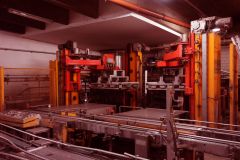 TT-7695 KHS, RINK GMBH, KRONES AG, HOLSTEIN AND KAPPERT BOTTLE CAP FILLING LINE, YEAR 1991 TO 1995TT-7695 KHS, RINK GMBH, KRONES AG, HOLSTEIN AND KAPPERT BOTTLE CAP FILLING LINE, YEAR 1991 TO 1995 1. SECOND-HAND BOTTLE CAP FILLING LINE 2. BRAND: KHS, RINK GMBH, KRONES AG, HOLSTEIN AND KAPPERT, RECOP, VIDEOJET TECHNOLOGIES GMBH, LUDWIG BOHRER MASCHINENBAU GMBH 3. YEAR: 1991 TO 1995 4. CAPACITY: 50,000 BOTTLES/H 5. FORMATS: 0.33 L QUANTITY: 1 Learn More
TT-7695 KHS, RINK GMBH, KRONES AG, HOLSTEIN AND KAPPERT BOTTLE CAP FILLING LINE, YEAR 1991 TO 1995TT-7695 KHS, RINK GMBH, KRONES AG, HOLSTEIN AND KAPPERT BOTTLE CAP FILLING LINE, YEAR 1991 TO 1995 1. SECOND-HAND BOTTLE CAP FILLING LINE 2. BRAND: KHS, RINK GMBH, KRONES AG, HOLSTEIN AND KAPPERT, RECOP, VIDEOJET TECHNOLOGIES GMBH, LUDWIG BOHRER MASCHINENBAU GMBH 3. YEAR: 1991 TO 1995 4. CAPACITY: 50,000 BOTTLES/H 5. FORMATS: 0.33 L QUANTITY: 1 Learn More -
 YASHA LIST-1310 FOR LUMMUS COTTON GIN EQUIPMENT LISTYASHA LIST-1310 FOR LUMMUS COTTON GIN EQUIPMENT LIST Learn More
YASHA LIST-1310 FOR LUMMUS COTTON GIN EQUIPMENT LISTYASHA LIST-1310 FOR LUMMUS COTTON GIN EQUIPMENT LIST Learn More -
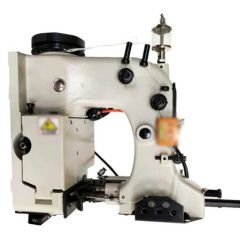 YY-1366 (USERS MANUAL) BAG CLOSING MACHINE HEAD, INSTRUCTION MANUALYY-1366 BAG CLOSING MACHINE HEAD, INSTRUCTION MANUAL FOR OPENRATOR SAFETY: - THIS MANUAL BOOK CONTAINS INSTRUCTIONS AND PRECAUTIONS FOR USING THE BAG CLOSING MACHINE HEAD. BE SURE TO READ AND UNDERSTAND THE MANUAL BOOK BEFORE USING THE MACHINES. - KEEP THIS MANUAL BOOK NEAR THE SEWING MACHINE FOR REFERENCE. BE SURE TO ATTACH THIS MANUAL BOOK TO THE MACHINE WHEN LENDING OR TRANSFER IT TO ANOTHER PERSON OR COMPANY. - PLEASE CONTACT THIS MANUAL BOOK FROM US IF IT LOST. - THE CONTENTS OF THIS MANUAL BOOK ARE SUBJECT TO CHANGE WITHOUT PRIOR NOTICE FOR IMPROVEMENT AND SAFETY PURPOSE. Learn More
YY-1366 (USERS MANUAL) BAG CLOSING MACHINE HEAD, INSTRUCTION MANUALYY-1366 BAG CLOSING MACHINE HEAD, INSTRUCTION MANUAL FOR OPENRATOR SAFETY: - THIS MANUAL BOOK CONTAINS INSTRUCTIONS AND PRECAUTIONS FOR USING THE BAG CLOSING MACHINE HEAD. BE SURE TO READ AND UNDERSTAND THE MANUAL BOOK BEFORE USING THE MACHINES. - KEEP THIS MANUAL BOOK NEAR THE SEWING MACHINE FOR REFERENCE. BE SURE TO ATTACH THIS MANUAL BOOK TO THE MACHINE WHEN LENDING OR TRANSFER IT TO ANOTHER PERSON OR COMPANY. - PLEASE CONTACT THIS MANUAL BOOK FROM US IF IT LOST. - THE CONTENTS OF THIS MANUAL BOOK ARE SUBJECT TO CHANGE WITHOUT PRIOR NOTICE FOR IMPROVEMENT AND SAFETY PURPOSE. Learn More -
 G-4426 SLAUGHTER LINE FOR CATTLE (300 PD) AND SHEEP (1000 PD)REFERENCE NUMBER: G-4426 SLAUGHTER LINE FOR CATTLE (300 PD) AND SHEEP (1000 PD) QUANTITY AVAILABLE: 1 Learn More
G-4426 SLAUGHTER LINE FOR CATTLE (300 PD) AND SHEEP (1000 PD)REFERENCE NUMBER: G-4426 SLAUGHTER LINE FOR CATTLE (300 PD) AND SHEEP (1000 PD) QUANTITY AVAILABLE: 1 Learn More -
 V-0025 COTTON PAD, BALL, SWAB MACHINESREFERENCE NUMBER: V-0025 COTTON PAD, BALL, SWAB MACHINES M-5138 SQUARE COTTON PAD PRODUCTION MACHINE M-5139 COTTON GAUZE PAD PRODUCTION MACHINE M-5140 MACHINE TO PRODUCE VARIOUS TYPES OF COTTON PADS M-5141 COTTON PAD PRODUCTION MACHINE M-5142 MAKEUP REMOVING COTTON PAD PRODUCTION MACHINE M-5143 ROUND COTTON PAD MAKING MACHINE M-5144 SQUARE ABSORBENT COTTON PAD PRODUCTION MACHINE M-5145 ROUND ABSORBENT COTTON PAD PRODUCTION MACHINE M-5146 ROUND COTTON PADS MAKING MACHINE M-5147 COTTON PAD MAKING MACHINE M-5148 COTTON PAD MAKING MACHINE M-5168 COTTON PADS MAKING MACHINE M-5169 COTTON Q-TIP MAKING MACHINE (100PCS/BAG) M-5170 COTTON BALL MAKING MACHINE (NEW) M-5171 COSMETIC COTTON PAD (GLOVE SHAPE) MAKING MACHINE M-5172 COSMETIC COTTON PAD MAKING MACHINE (ROUND PAD) M-5101 MEDICAL COTTON BALL MAKING MACHINE 20KG/HOUR QUANTITY AVAILABLE: 17 Learn More
V-0025 COTTON PAD, BALL, SWAB MACHINESREFERENCE NUMBER: V-0025 COTTON PAD, BALL, SWAB MACHINES M-5138 SQUARE COTTON PAD PRODUCTION MACHINE M-5139 COTTON GAUZE PAD PRODUCTION MACHINE M-5140 MACHINE TO PRODUCE VARIOUS TYPES OF COTTON PADS M-5141 COTTON PAD PRODUCTION MACHINE M-5142 MAKEUP REMOVING COTTON PAD PRODUCTION MACHINE M-5143 ROUND COTTON PAD MAKING MACHINE M-5144 SQUARE ABSORBENT COTTON PAD PRODUCTION MACHINE M-5145 ROUND ABSORBENT COTTON PAD PRODUCTION MACHINE M-5146 ROUND COTTON PADS MAKING MACHINE M-5147 COTTON PAD MAKING MACHINE M-5148 COTTON PAD MAKING MACHINE M-5168 COTTON PADS MAKING MACHINE M-5169 COTTON Q-TIP MAKING MACHINE (100PCS/BAG) M-5170 COTTON BALL MAKING MACHINE (NEW) M-5171 COSMETIC COTTON PAD (GLOVE SHAPE) MAKING MACHINE M-5172 COSMETIC COTTON PAD MAKING MACHINE (ROUND PAD) M-5101 MEDICAL COTTON BALL MAKING MACHINE 20KG/HOUR QUANTITY AVAILABLE: 17 Learn More -
 TT-7197 SCHLUMBERGER REBREAKER AND PASSAGE GILL BOX, YEAR 1998 TO 2008TT-7197 SCHLUMBERGER REBREAKER AND PASSAGE GILL BOX, YEAR 1998 TO 2008 ITEM 001 REBREAKER SCHLUMBERGER D3/GC30 QUANTITY: 1 ITEM 002 PASSAGE GILL BOX SCHLUMBERGER GC15 QUANTITY: 1 ITEM 003 PASSAGE GILL BOX SCHLUMBERGER GC15 YEAR 1998 QUANTITY: 1 ITEM 004 PASSAGE GILL BOX SCHLUMBERGER GC15 QUANTITY: 1 Learn More
TT-7197 SCHLUMBERGER REBREAKER AND PASSAGE GILL BOX, YEAR 1998 TO 2008TT-7197 SCHLUMBERGER REBREAKER AND PASSAGE GILL BOX, YEAR 1998 TO 2008 ITEM 001 REBREAKER SCHLUMBERGER D3/GC30 QUANTITY: 1 ITEM 002 PASSAGE GILL BOX SCHLUMBERGER GC15 QUANTITY: 1 ITEM 003 PASSAGE GILL BOX SCHLUMBERGER GC15 YEAR 1998 QUANTITY: 1 ITEM 004 PASSAGE GILL BOX SCHLUMBERGER GC15 QUANTITY: 1 Learn More -
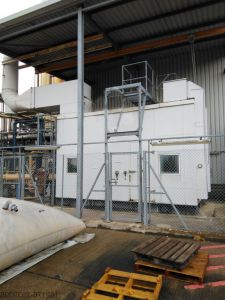 TT-1676 SIEMENS SGT-100 TYPHOON GAS TURBINE, YEAR 1994, 4.4 MW AT 11,000 VOLTS, 50 HzTT-1676 SIEMENS SGT-100 TYPHOON GAS TURBINE, YEAR 1994, 4.4 MW AT 11,000 VOLTS, 50 Hz SIEMENS SGT-100 TYPHOON GAS TURBINE YEAR: 1994 MACHINE TYPE: GAS TURBINE PACKAGE BRAND: SIEMENS MODEL: SGT-100 TYPHOON GAS TURBINE 50 Hz CONDITION: GOOD CONDITION (USED) QUANTITY: 1 Learn More
TT-1676 SIEMENS SGT-100 TYPHOON GAS TURBINE, YEAR 1994, 4.4 MW AT 11,000 VOLTS, 50 HzTT-1676 SIEMENS SGT-100 TYPHOON GAS TURBINE, YEAR 1994, 4.4 MW AT 11,000 VOLTS, 50 Hz SIEMENS SGT-100 TYPHOON GAS TURBINE YEAR: 1994 MACHINE TYPE: GAS TURBINE PACKAGE BRAND: SIEMENS MODEL: SGT-100 TYPHOON GAS TURBINE 50 Hz CONDITION: GOOD CONDITION (USED) QUANTITY: 1 Learn More -
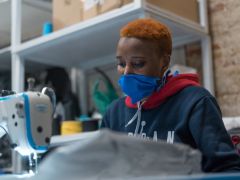 D-2388 What’s the Best Material for a Mask?
D-2388 What’s the Best Material for a Mask?Federal health officials have now recommended that we cover our faces with fabric during the coronavirus pandemic. But what material offers the most protection?
The Centers for Disease Control and Prevention has posted a no-sew mask pattern using a bandanna and a coffee filter as well as a video on making masks using rubber bands and folded fabrics found at home.
While a simple face covering can reduce the spread of coronavirus by blocking outgoing germs from coughs or sneezes of an infected person, experts say there is more variation in how much homemade masks might protect the wearer from incoming germs, depending on the fit and quality of the material used.
Scientists around the country have taken it upon themselves to identify everyday materials that do a better job of filtering microscopic particles. In recent tests, HEPA furnace filters scored well, as did vacuum cleaner bags, layers of 600-count pillowcases and fabric similar to flannel pajamas. Stacked coffee filters had medium scores. Scarves and bandanna material had the lowest scores, but still captured a small percentage of particles.
If you don’t have any of the materials that were tested, a simple light test can help you decide whether a fabric is a good candidate for a mask.
“Hold it up to a bright light,” said Dr. Scott Segal, chairman of anesthesiology at Wake Forest Baptist Health who recently studied homemade masks. “If light passes really easily through the fibers and you can almost see the fibers, it’s not a good fabric. If it’s a denser weave of thicker material and light doesn’t pass through it as much, that’s the material you want to use.”
Researchers say it’s important to remember that lab studies are conducted under perfect conditions with no leaks or gaps in the mask, but the test methods give us a way to compare materials. And while the degree of filtration for some homemade masks seems low, most of us — who are staying home and practicing social distancing in public — don’t need the high level of protection required for medical workers. More important, any face covering is better than none, especially if worn by a person who has the virus but doesn’t know it.
The biggest challenge of choosing a homemade mask material is to find a fabric that is dense enough to capture viral particles, but breathable enough that we can actually wear it. Some items being touted online promise high filtration scores, but the material would be unwearable.
Dressing Up for Work … at Home
Yang Wang, an assistant professor of environmental engineering at Missouri University of Science and Technology, worked with his graduate students to study various combinations of layered materials — including both air filters and fabric. “You need something that is efficient for removing particles, but you also need to breathe,” said Dr. Wang, who last fall won an international award for aerosol research.To test everyday materials, scientists are using methods similar to those used to test medical masks, which everybody agrees should be saved for medical workers who are exposed to high doses of virus from seeing infected patients. The best medical mask — called the N95 respirator — filters out at least 95 percent of particles as small as 0.3 microns. By comparison, a typical surgical mask — made using a rectangular piece of pleated fabric with elastic ear loops — has a filtration efficiency ranging from 60 to 80 percent.
Dr. Wang’s group tested two types of air filters. An allergy-reduction HVAC filter worked the best, capturing 89 percent of particles with one layer and 94 percent with two layers. A furnace filter captured 75 percent with two layers, but required six layers to achieve 95 percent. To find a filter similar to those tested, look for a minimum efficiency reporting value (MERV) rating of 12 or higher or a microparticle performance rating of 1900 or higher.
The problem with air filters is that they potentially could shed small fibers that would be risky to inhale. So if you want to use a filter, you need to sandwich the filter between two layers of cotton fabric. Dr. Wang said one of his grad students made his own mask by following the instructions in the C.D.C. video, but adding several layers of filter material inside a bandanna.
Dr. Wang’s group also found that when certain common fabrics were used, two layers offered far less protection than four layers. A 600 thread count pillow case captured just 22 percent of particles when doubled, but four layers captured nearly 60 percent. A thick woolen yarn scarf filtered 21 percent of particles in two layers, and 48.8 percent in four layers. A 100 percent cotton bandanna did the worst, capturing only 18.2 percent when doubled, and just 19.5 percent in four layers.
The group also tested Brew Rite and Natural Brew basket-style coffee filters, which, when stacked in three layers, showed 40 to 50 percent filtration efficiency — but they were less breathable than other options.
If you are lucky enough to know a quilter, ask them to make you a mask. Tests performed at the Wake Forest Institute for Regenerative Medicine in Winston-Salem, N.C., showed good results for homemade masks using quilting fabric. Dr. Segal, of Wake Forest Baptist Health, who led the study, noted that quilters tend to use high-quality, high-thread count cotton. The best homemade masks in his study were as good as surgical masks or slightly better, testing in the range of 70 to 79 percent filtration. Homemade masks that used flimsier fabric tested as low as 1 percent filtration, Dr. Segal said.
The best-performing designs were a mask constructed of two layers of high-quality, heavyweight “quilter’s cotton,” a two-layer mask made with thick batik fabric, and a double-layer mask with an inner layer of flannel and outer layer of cotton.
Bonnie Browning, executive show director for the American Quilter’s Society, said that quilters prefer tightly woven cottons and batik fabrics that stand up over time. Ms. Browning said most sewing machines can handle only two layers of fabric when making a pleated mask, but someone who wanted four layers of protection could wear two masks at a time.
Ms. Browning said she recently reached out to quilters on Facebook and heard from 71 people who have made a combined total of nearly 15,000 masks. “We quilters are very much in the thick of what’s going on with this,” said Ms. Browning, who lives in Paducah, Ky. “One thing most of us have is a stash of fabric.”
People who don’t sew could try a folded origami mask, created by Jiangmei Wu, assistant professor of interior design at Indiana University. Ms. Wu, who is known for her breathtaking folded artwork, said she began designing a folded mask out of a medical and building material called Tyvek, as well as vacuum bags, after her brother in Hong Kong, where mask wearing is common, suggested it. (DuPont, the maker of Tyvek, said in a statement that Tyvek is intended for medical apparel, not masks.) The folded mask pattern is free online, as is a video demonstrating the folding process. In tests at Missouri University and University of Virginia, scientists found that vacuum bags removed between 60 percent and 87 percent of particles. But some brands of vacuum bags may contain fiberglass or are harder to breathe through than other materials, and shouldn’t be used. Ms. Wu used a bag by EnviroCare Technologies, which has said it does not use fiberglass in its paper and synthetic cloth bags.
“I wanted to create an alternative for people who don’t sew,” said Ms. Wu, who said she is talking to various groups to find other materials that will be effective in a folded mask. “Given the shortage of all kinds of materials, even vacuum bags might run out.”
The scientists who conducted the tests used a standard of 0.3 microns because that is the measure used by the National Institute for Occupational Safety and Health for medical masks.
Linsey Marr, a Virginia Tech aerosol scientist and an expert in the transmission of viruses, said the certification method for respirators and HEPA filters focuses on 0.3 microns because particles around that size are the hardest to catch. While it seems counterintuitive, particles smaller than 0.1 microns are actually easier to catch because they have a lot of random motion that makes them bump into the filter fibers, she said.
“Even though coronavirus is around 0.1 microns, it floats around in a wide range of sizes, from around 0.2 to several hundred microns, because people shed the virus in respiratory fluid droplets that also contain lots of salts and proteins and other things,” said Dr. Marr. “Even if the water in the droplets fully evaporates, there’s still a lot of salt and proteins and other gunk that stays behind as solid or gel-like material. I think 0.3 microns is still useful for guidance because the minimum filtration efficiency will be somewhere around this size, and it’s what NIOSH uses.”
Learn More -
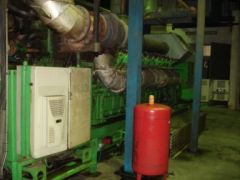 M-5321 JENBACHER NATURAL GAS POWERPLANT 21.6 MW YEAR 1998REFERENCE NUMBER: M-5321 (22011DGFAB1RXL) L JENBACHER NATURAL GAS POWERPLANT 21.6 MW YEAR 1998 COMPLETE JENBACHER NATURAL GAS POWERPLANT OF 21.6 MW YEAR OF MANUFACTURE END OF 1998 COMMISSIONING: 5 UNITS IN 2000, 1 UNIT IN 2009, 1 UNIT IN 2010, AND 1 UNIT IN 2011 8 UNITS JENBACHER JMS 620 G OF 2.7 MWE-TOTAL EFFECTIVE ELECTRIC OUTPUT 21.7 MW RUNNING HOURS: 5 UNITS BETWEEN 38,000 AND 40,000 HOURS, 2 UNITS 6,200 HOURS AND 1 UNIT 7,200 HOURS JENBACHER MAINTENANCE FULL MAINTENANCE HISTORY QUANTITY AVAILABLE: 1 Learn More
M-5321 JENBACHER NATURAL GAS POWERPLANT 21.6 MW YEAR 1998REFERENCE NUMBER: M-5321 (22011DGFAB1RXL) L JENBACHER NATURAL GAS POWERPLANT 21.6 MW YEAR 1998 COMPLETE JENBACHER NATURAL GAS POWERPLANT OF 21.6 MW YEAR OF MANUFACTURE END OF 1998 COMMISSIONING: 5 UNITS IN 2000, 1 UNIT IN 2009, 1 UNIT IN 2010, AND 1 UNIT IN 2011 8 UNITS JENBACHER JMS 620 G OF 2.7 MWE-TOTAL EFFECTIVE ELECTRIC OUTPUT 21.7 MW RUNNING HOURS: 5 UNITS BETWEEN 38,000 AND 40,000 HOURS, 2 UNITS 6,200 HOURS AND 1 UNIT 7,200 HOURS JENBACHER MAINTENANCE FULL MAINTENANCE HISTORY QUANTITY AVAILABLE: 1 Learn More -
 T-6546 PFE TESTER FOR PELLET FILTRATION EFFICIENCY OF SURGICAL MASKREFERENCE NUMBER: T-6546PFE TESTER FOR PELLET FILTRATION EFFICIENCY OF SURGICAL MASKINTRODUCTIONMEDICAL SURGICAL MASK PARTICLE FILTRATION EFFICIENCY PFE TESTER IS SUITABLE FOR MEDICAL INSTRUMENT INSPECTION CENTER, SAFETY PROTECTION INSPECTION CENTER, LABOR PROTECTION INSPECTION CENTER, DRUG INSPECTION CENTER, DISEASE PREVENTION AND CONTROL CENTER, TEXTILE INSPECTION CENTER, HOSPITAL, MASK AND RESPIRATOR MANUFACTURERS, ETC.FEATURESTHE PFE TESTER FOR PARTICLE FILTRATION EFFICIENCY OF SURGICAL MASKS IS EQUIPPED WITH A SPECIAL SALT AEROSOL GENERATOR, WHICH CAN PRODUCE AEROSOLS WITH SPECIFIC PARTICLE SIZE AND CONCENTRATION.EQUIPPED WITH A SERIES OF SPECIAL FIXTURE, SUITABLE FOR THE DETECTION OF ALL KINDS OF MASKS.BUILT-IN HIGH LIFE PHOTOMETER MODULE, SAMPLING TIME ACCUMULATION, PROMPT LIGHT CLEANING.AUTOMATIC CONTROL OF AEROSOL GENERATION, AUTOMATIC CALCULATION OF CAPTURE EFFICIENCY AND MASK AIRFLOW RESISTANCE, REDUCE HUMAN INTERVENTION.BUILT-IN HIGH PRECISION ELECTRONIC FLOWMETER AND HIGH PERFORMANCE SAMPLING PUMP TO ENSURE FLOW STABILITY.PARAMETERTEST FLOW: PARAMETER RANGE: (5 ~ 100) L/MIN; RESOLUTION: (5 ~ 100) L/MIN;MAXIMUM ALLOWABLE ERROR: ±1%PRESSURE DETECTION RANGE: PARAMETER RANGE: (0 ~ 2500) PA; RESOLUTION: 0.1PA; MAXIMUM ALLOWABLE ERROR: ±1%CONCENTRATION DETECTION RANGE: PARAMETER RANGE: (0.001 ~ 100) 0 G/L;DETECTION ACCURACY: 1% OF THE READ VALUE IN THE RANGE OF 0.01% TO 100%DETECTION REPEATABILITY: 5% OF THE READ VALUE IN THE RANGE OF 0.01% TO 100% MEDIAN DIAMETER OF SALT AEROSOL PARTICLES (CMD): (0.075±0.02)MMEDIAN AEROSOL PARTICLE NUMBER DIAMETER (CMD) (OPTIONAL): (0.185±0.02) MOPERATING TEMPERATURE: 20±5CLearn MoreINSTRUMENT NOISE: <60DB(A)POWER SUPPLY: AC220V±10%, 50HZMAIN MACHINE SIZE: (LENGTH 700 X WIDTH 720 X HEIGHT 1450) mmQUANTITY: 1
T-6546 PFE TESTER FOR PELLET FILTRATION EFFICIENCY OF SURGICAL MASKREFERENCE NUMBER: T-6546PFE TESTER FOR PELLET FILTRATION EFFICIENCY OF SURGICAL MASKINTRODUCTIONMEDICAL SURGICAL MASK PARTICLE FILTRATION EFFICIENCY PFE TESTER IS SUITABLE FOR MEDICAL INSTRUMENT INSPECTION CENTER, SAFETY PROTECTION INSPECTION CENTER, LABOR PROTECTION INSPECTION CENTER, DRUG INSPECTION CENTER, DISEASE PREVENTION AND CONTROL CENTER, TEXTILE INSPECTION CENTER, HOSPITAL, MASK AND RESPIRATOR MANUFACTURERS, ETC.FEATURESTHE PFE TESTER FOR PARTICLE FILTRATION EFFICIENCY OF SURGICAL MASKS IS EQUIPPED WITH A SPECIAL SALT AEROSOL GENERATOR, WHICH CAN PRODUCE AEROSOLS WITH SPECIFIC PARTICLE SIZE AND CONCENTRATION.EQUIPPED WITH A SERIES OF SPECIAL FIXTURE, SUITABLE FOR THE DETECTION OF ALL KINDS OF MASKS.BUILT-IN HIGH LIFE PHOTOMETER MODULE, SAMPLING TIME ACCUMULATION, PROMPT LIGHT CLEANING.AUTOMATIC CONTROL OF AEROSOL GENERATION, AUTOMATIC CALCULATION OF CAPTURE EFFICIENCY AND MASK AIRFLOW RESISTANCE, REDUCE HUMAN INTERVENTION.BUILT-IN HIGH PRECISION ELECTRONIC FLOWMETER AND HIGH PERFORMANCE SAMPLING PUMP TO ENSURE FLOW STABILITY.PARAMETERTEST FLOW: PARAMETER RANGE: (5 ~ 100) L/MIN; RESOLUTION: (5 ~ 100) L/MIN;MAXIMUM ALLOWABLE ERROR: ±1%PRESSURE DETECTION RANGE: PARAMETER RANGE: (0 ~ 2500) PA; RESOLUTION: 0.1PA; MAXIMUM ALLOWABLE ERROR: ±1%CONCENTRATION DETECTION RANGE: PARAMETER RANGE: (0.001 ~ 100) 0 G/L;DETECTION ACCURACY: 1% OF THE READ VALUE IN THE RANGE OF 0.01% TO 100%DETECTION REPEATABILITY: 5% OF THE READ VALUE IN THE RANGE OF 0.01% TO 100% MEDIAN DIAMETER OF SALT AEROSOL PARTICLES (CMD): (0.075±0.02)MMEDIAN AEROSOL PARTICLE NUMBER DIAMETER (CMD) (OPTIONAL): (0.185±0.02) MOPERATING TEMPERATURE: 20±5CLearn MoreINSTRUMENT NOISE: <60DB(A)POWER SUPPLY: AC220V±10%, 50HZMAIN MACHINE SIZE: (LENGTH 700 X WIDTH 720 X HEIGHT 1450) mmQUANTITY: 1
